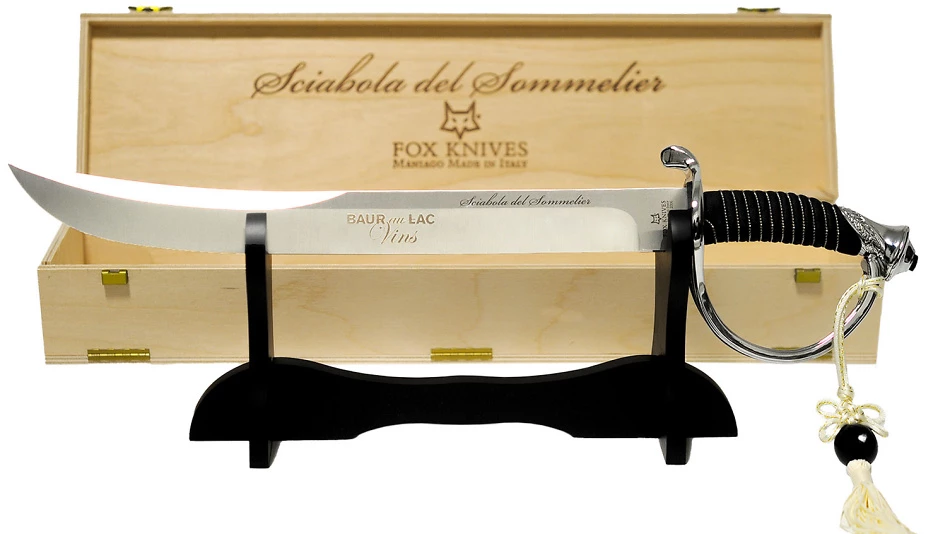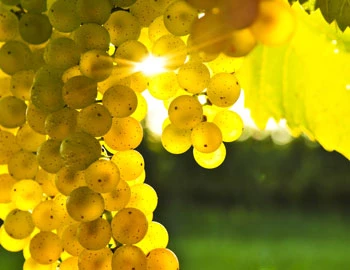
Abelé 1757 Blanc de Blancs
AOC Champagne, 750 ml

| Grape variety: | Chardonnay |
| Producer: | Abelé 1757 |
| Origin: | France / Champagne |
| Other bottle sizes: |
Description
In the glass, this Blanc de Blancs (100% Chardonnay) exudes a fragrant richness and freshness with floral aromas of hawthorn and mimosa, followed by riper, fruity notes such as white peach, Granny Smith apple and pear, perfectly expressing the harmonious interplay of bouquet and terroir. A full-bodied attack on the palate, dense and fine creamy perlage, supple with citrus hints, persistent freshness as well as fullness and a mineral finish round off this champagne. A finesse-rich Blanc de Blancs that harmonises perfectly with an aperitif, but is also a refined companion to seafood and fish dishes.
Celebrate the Art of Sabring!

With its elegant design, this champagne sabre is not only an impressive eye-catcher at any celebration and an indispensable tool for stylish sabering, but also the perfect gift for all passionate sparkling wine lovers.
Attributes
| Origin: | France / Champagne |
| Grape variety: | Chardonnay |
| Ripening potential: | 2 to 6 years |
| Drinking temperature: | 10 to 12 °C |
| Food Pairing: | Apéro pastries, Apéro riche, Fish terrine, Moules à la marinière |
| Maturation duration: | 36 months |
| Volume: | 12.5 % |
| Note: | Contains sulphites |
Abelé 1757
CHAMPAGNE MAISON ABELÉ 1757
exceptional – tailor-made – long maturing time – very small quantities
Maison Abelé 1757 is one of the oldest Champagne houses. With a deliberately limited production, it preserves the familiar character of a small company while guaranteeing the highest quality – two and a half centuries of stories and legends in the heart of Reims.

Chardonnay
King or beggar?
Hardly any variety of vine shows such a broad spectrum of quality as the Chardonnay. Its wines range from faceless neutrality to breath-taking class. It is an extremely low-maintenance vine, which explains why it is grown around the world – even in places where it probably should not be. The aromas of the Chardonnay variety are not very pronounced: a bit of green apple, a little hazelnut; in warmer latitudes, also melon and exotic fruits. The wines are often defined by maturing in casks. They develop more or less subtle notes of butter, toasted bread and vanilla. The grapes achieve their highest expression in their region of origin, Burgundy. Its heart beats in the Côte de Beaune: one might think of the plant growth of Meursault or Puligny-Montrachet. With their finesse and complexity, they can survive for decades. Chardonnay also achieves first class in some Blanc-de-Blancs champagnes. It additionally yields great wines in the Burgundian Chablis, and increasingly in Australia and Chile. A simple rule of thumb for pairing with food: When butter and cream are involved, you cannot go wrong with Chardonnay.

France
France – Philosophy in a bottle
According to French philosophy, wine should be an expression of the soil and climate. They use the word “terroir” to describe this. Terroir makes every wine different, and many especially good. French wine is regarded worldwide as an expression of cultural perfection. The French believe that humans are responsible for the quality of the berries, the vine variety for their character, and nature for the quantity. This philosophy can be expressed succinctly as: “the truth is the vineyard, not the man.”


